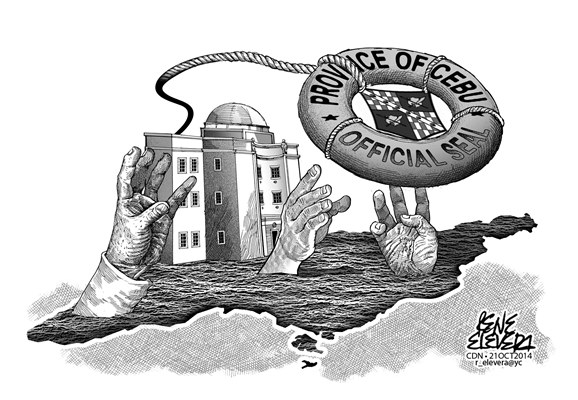There is in fact no perfect, fool-proof plan in dealing with natural disasters and even Provincial Disaster Management chief Baltazar Tribunalo knows that.
Thus he may even be generous when he described Cebu’s preparedness level as 6 out of 10 on the eve of the one-year observance of the Oct. 15 earthquake that rocked Cebu and Bohol provinces.
One cannot predict when and how earthquakes will hit as seen in Japan which lost some of its nuclear plants to an undersea earthquake three years ago. Typhoons, at least, can be detected before it hits, owing to 24-hour monitoring on their movement across the sea before making landfall.
Whether it be quakes or typhoons, Cebu province cannot afford to let its guard down and the provincial government knows this, having readied P121 million for its calamity fund.
For it is by setting up an effective early warning system and a strong local presence that can deal with nearly every contingency and help save lives in case a natural or man-made disaster strikes.
While equipment and communication are vital, awareness and preparedness of each and everyone are equally important to reduce casualties to a bare minimum.
Just as important as emergency response is rebuilding and rehabilitation, so we hope the Davide administration sets aside a substantial amount for this purpose if only to reduce the province’s dependence on the Palace.
Tribunalo noted several local governments like Carcar City that are making an effort to prepare for contingencies while others either lack the resources or are simply too dependent on the province to do their share to prepare their constituents on how to cope with these disasters.
The gospel of disaster preparedness had been embraced in the third class municipality of San Francisco in Camotes Island which sustained zero casualty after last year’s supertyphoon Yolanda.
Tribunalo should use, if he hasn’t already, that town’s purok system as a model for other local governments in Cebu that have far bigger resources so their local officials won’t have to be dependent on the province or the national government for help.
For the sad truth shown after last year’s quake and supertyphoon Yolanda is that private sector groups and foreign countries deliver aid faster than the national government (or imperial Manila as some call it) which is slowed down by bureaucratic red tape.
Cebu doesn’t have to wait forlornly for the Palace to answer its emergency disaster response needs if it can afford to do so. But it can ask the government to help shoulder the costs of rebuilding.
What’s important is that the province can immediately respond to the needs of their constituents after and even before the calamity hits. It is the very reason these local government units are created for in the first place.
Disclaimer: The comments uploaded on this site do not necessarily represent or reflect the views of management and owner of Cebudailynews. We reserve the right to exclude comments that we deem to be inconsistent with our editorial standards.





